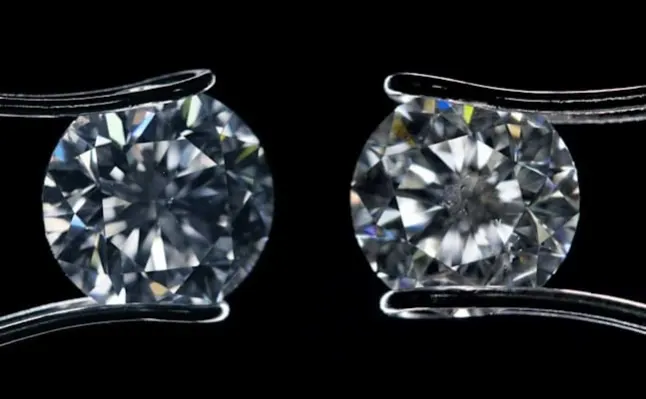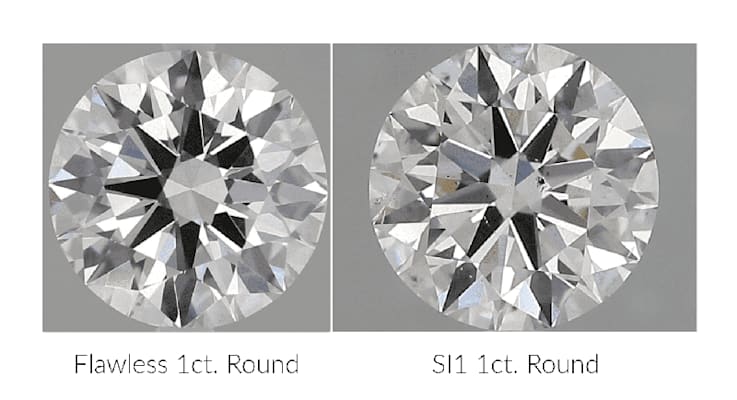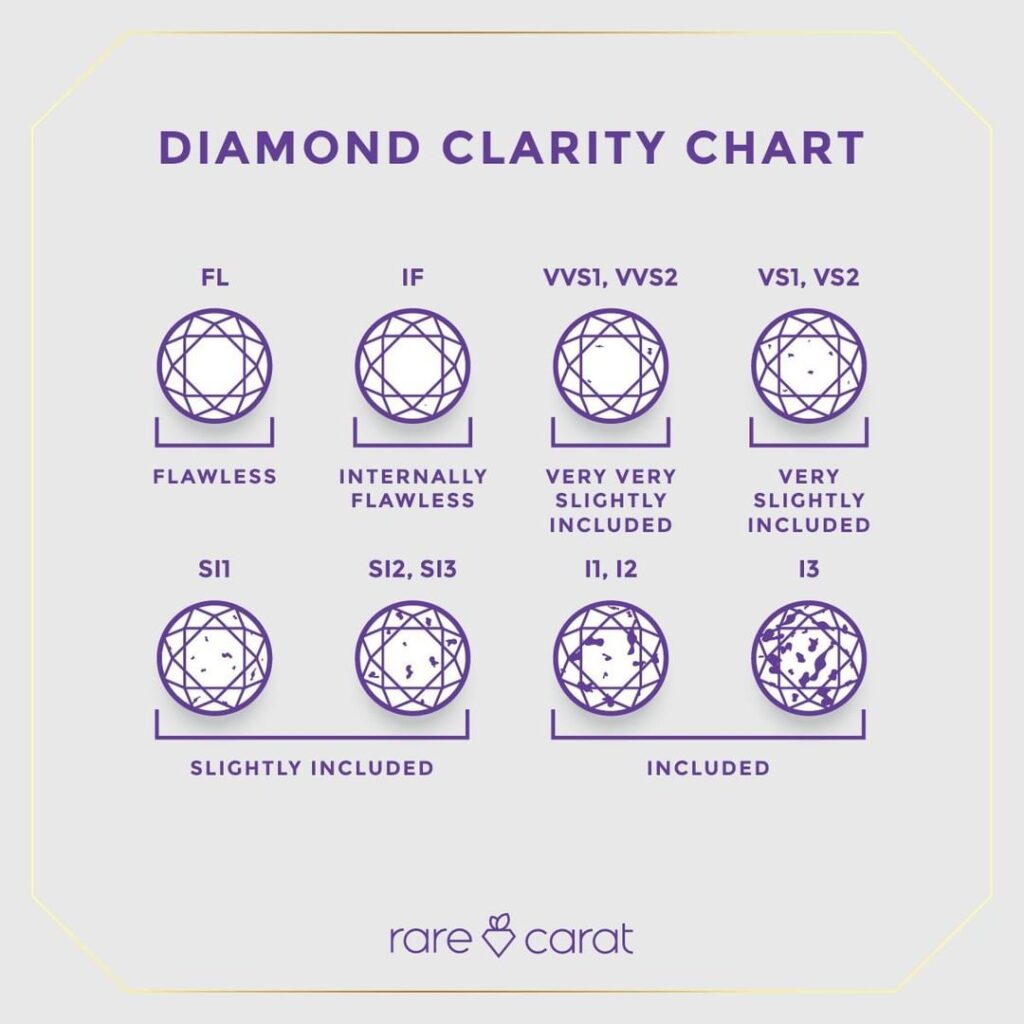The Ultimate Diamond Clarity Guide: Everything You Need to Know

Diamonds represent elegance as well as beauty and luxurious status but their value depends greatly on their specific characteristics. A diamond’s clarity grade together with its value gets determined primarily by how clear the stone appears. Diamond clarity plays a vital role in selecting any diamond jewelry piece because it determines both the appearance and market worth.
The scope of this complete explainer introduces every aspect about diamond clarity starting from grading methods to importance and selection strategies for optimal results.
What is Diamond Clarity?
Diamond clarity refers to the presence (or absence) of internal and external imperfections, also known as inclusions and blemishes, respectively. These natural characteristics are formed during the diamond’s creation process deep within the Earth under extreme heat and pressure.
Types of Imperfections:
- Inclusions (Internal flaws): Tiny crystals, fractures, or irregularities inside the diamond.
- Blemishes (Surface flaws): Scratches, pits, or nicks on the diamond’s surface.
A higher clarity grade means fewer imperfections, resulting in a more brilliant and valuable diamond.
The Diamond Clarity Scale
The Gemological Institute of America (GIA) developed the globally recognized Diamond Clarity Scale, which categorizes diamonds based on the size, number, location, and visibility of their flaws.
Clarity Grade | Meaning | Visibility to the Naked Eye |
FL (Flawless) | No inclusions or blemishes visible under 10x magnification | Absolutely clean |
IF (Internally Flawless) | No internal inclusions, only minor surface blemishes | Flawless to the naked eye |
VVS1 & VVS2 (Very, Very Slightly Included) | Minute inclusions that are extremely difficult to see under 10x magnification | Virtually flawless to the naked eye |
VS1 & VS2 (Very Slightly Included) | Small inclusions visible under 10x magnification, difficult to detect without magnification | Eye-clean in most cases |
SI1 & SI2 (Slightly Included) | Noticeable inclusions visible under 10x magnification | Some inclusions may be visible to the naked eye |
I1, I2, & I3 (Included) | Inclusions are obvious under 10x magnification and may affect transparency and durability | Clearly visible flaws |
How Diamond Clarity Affects Appearance and Price

Clarity has a significant impact on a diamond’s beauty and value. Here’s why:
1. Visual Appeal
- Higher clarity diamonds appear clearer and more brilliant.
- Inclusions in lower clarity diamonds may affect how the stone reflects light, reducing its sparkle.
2. Price Differences
- Flawless and Internally Flawless diamonds are incredibly rare and expensive.
- Diamonds with slight inclusions (VS1, VS2, SI1) offer an excellent balance between quality and affordability.
3. Durability Considerations
- Some inclusions, particularly in lower-grade diamonds (I1, I2, I3), may weaken the structure of the diamond, making it more prone to damage.
Choosing the Right Diamond Clarity for Your Needs
The ideal diamond clarity depends on your budget, personal preferences, and how you plan to use the diamond. Here are some key considerations:
Best Clarity for Engagement Rings
- VS1 or VS2: Offers near-flawless appearance at a reasonable price.
- SI1: Provides good value while maintaining eye-clean beauty.
Best Clarity for Investment
- FL or IF: Highly rare and valuable for collectors and investors.
- VVS1 or VVS2: Retains strong value while being more affordable than flawless diamonds.
Budget-Friendly Options
- SI1 or SI2: Great for maximizing size while keeping costs lower.
- I1 (with careful selection): Can still be beautiful if flaws are positioned where they won’t affect sparkle.
Tips for Buying a Diamond Based on Clarity
1. Focus on Eye-Clean Diamonds
Rather than fixating on the highest clarity grade, choose a diamond that appears flawless to the naked eye.
2. Examine the Diamond in Person
If possible, inspect the diamond under different lighting conditions to ensure its inclusions are not visible.
3. Consider Alternative Shapes
- Brilliant-cut diamonds (round, princess, cushion) hide inclusions better than step-cut diamonds (emerald, Asscher).
- If choosing a lower clarity grade, opt for a shape that maximizes light reflection.
4. Review the Diamond Certificate
Always buy diamonds with a GIA or AGS certification to ensure accurate grading.
5. Work with a Reputable Jeweler
A knowledgeable jeweler can help you find the best clarity diamond within your budget while ensuring quality.
Finding the Perfect Clarity
Diamond clarity is one of the key factors that influence a diamond’s beauty and value, but it should be balanced with other characteristics like cut, color, and carat weight. For most buyers, an eye-clean VS1, VS2, or SI1 diamond provides the best mix of beauty and value. However, if budget isn’t a concern, FL or IF diamonds offer unmatched rarity and brilliance.
By understanding clarity grades and knowing what to look for, you can confidently choose a diamond that suits your needs, whether for an engagement ring, an investment, or a personal treasure.

